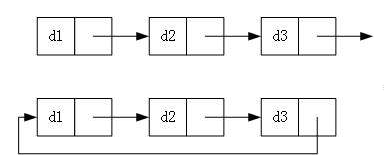<数据结构>还不会写单向链表?我手把手教你
文章目录
- 1.链表概况
-
- 1.1 链表的概念及结构
- 1.2 链表的分类
- 2. 单向链表的实现
-
- 2.1 SList.h(头文件的汇总,函数的声明)
- 2.2 SList.c(函数的具体实现逻辑)
-
- 2.2.1 打印链表
- 2.2.2 搞出一个新节点(为其他函数服务)
- 2.2.3 链表尾插
- 2.2.4 链表头插
- 2.2.5 链表尾删
- 2.2.6 链表头删
- 2.2.7 查找节点
- 2.2.8 在pos位置之前插入
- 2.2.9 在pos位置之后插入
- 2.2.10 删除pos位置
- 2.2.11 删除pos之后位置
- 2.2.12 链表销毁
1.链表概况
1.1 链表的概念及结构
概念:链表是一种物理存储结构上非连续、非顺序的存储结构,数据元素的逻辑顺序是通过链表中的指针链接次序实现的 。


1.2 链表的分类
实际中链表的结构非常多样,以下情况组合起来就有8种链表结构
-
单向或者双向

-
带头或者不带头

-
循环或者非循环

虽然有这么多的链表的结构,但是我们实际中最常用还是两种结构
- 无头单向非循环链表:结构简单,一般不会单独用来存数据。实际中更多是作为其他数据结构的子结构,如哈希桶、图的邻接表等等。另外这种结构在笔试面试中出现很多。
- 带头双向循环链表:结构最复杂,一般用在单独存储数据。实际中使用的链表数据结构,都是带头双向循环链表。另外这个结构虽然结构复杂,但是使用代码实现以后会发现结构会带来很多优势,实现反而简单了,后面我们代码实现了就知道了
2. 单向链表的实现
单向链表结构

2.1 SList.h(头文件的汇总,函数的声明)
#pragma once#include#include#include#includetypedef int SLTDataType;typedef struct SListNode{int data;//数据struct SListNode* next;//下一个节点的地址}SListNode;void SListPrint(SListNode* phead);//打印SListNode* BuySListNode(SLTDataType x);//搞出一个新节点void SListPushBack(SListNode** pphead, SLTDataType x);//尾插void SListPushFront(SListNode** pphead, SLTDataType x);//头插void SListPopBack(SListNode** pphead);//尾删void SListPopFront(SListNode** pphead);//头删SListNode* SListFind(SListNode* phead, SLTDataType x);//查找void SListInsert(SListNode** pphead, SListNode* pos, SLTDataType x);//在pos位置之前插入void SListInsertAfter(SListNode* pos, SLTDataType x);//在pos位置之后插入void SListErase(SListNode** pphead, SListNode* pos);//删除pos位置void SListEraseAfter(SListNode* pos);//删除pos之后位置void SListDestroy(SListNode** pphead);//销毁2.2 SList.c(函数的具体实现逻辑)
2.2.1 打印链表
//打印void SListPrint(SListNode* phead){//assert(phead);//没必要断言,空链表也能打印SListNode* cur = phead;while (cur != NULL){printf("%d->", cur->data);cur = cur->next;}printf("NULL\n");}//test.cvoid TestSList1(){SListNode* slist;//结构体指针,用于存节点的地址SListNode* n1 = (SListNode *)malloc(sizeof(SListNode));SListNode* n2 = (SListNode*)malloc(sizeof(SListNode));SListNode* n3 = (SListNode*)malloc(sizeof(SListNode));n1->data = 1;n2->data = 2;n3->data = 3;n1->next = n2;n2->next = n3;n3->next = NULL;slist = n1;SListPrint(slist);}

2.2.2 搞出一个新节点(为其他函数服务)
//搞出一个新节点SListNode* BuySListNode(SLTDataType x){SListNode* newnode = (SListNode*)malloc(sizeof(SListNode));if (newnode == NULL){printf("malloc fail\n");exit(-1);}else{newnode->data = x;newnode->next = NULL;}return newnode;}2.2.3 链表尾插


//尾插void SListPushBack(SListNode** pphead,SLTDataType x)//会改变实参slist,要传二级指针{assert(pphead);//就算链表是空,它的二级指针也不为空SListNode* newnode = BuySListNode(x);if (*pphead == NULL){*pphead = newnode;}else{//遍历找尾SListNode* tail = *pphead;while (tail->next != NULL){tail = tail->next;}tail->next = newnode;}}void TestSList2(){SListNode* slist = NULL;for (int i = 0; i < 6; i++){SListPushBack(&slist,i);}SListPrint(slist);}
2.2.4 链表头插

//头插void SListPushFront(SListNode** pphead, SLTDataType x){assert(pphead);//就算链表是空,它的二级指针也不为空SListNode* newnode = BuySListNode(x);newnode->next = *pphead;*pphead = newnode;}void TestSList2(){SListNode* slist = NULL;for (int i = 0; i < 6; i++){SListPushFront(&slist,i);}SListPrint(slist);}
2.2.5 链表尾删
方法1(用两个指针,分别找最后一个和倒数第二个):

方法2(直接找倒数第二个):

//尾删void SListPopBack(SListNode** pphead)//如果只有一个节点但还要尾删,就会改变实参slist,建议传二级指针{assert(pphead);//就算链表是空,它的二级指针也不为空//三种情况://1.空//2.一个节点//3.多个节点if (*pphead == NULL){return;}else if ((*pphead)->next == NULL)//优先级,记得加括号{free(*pphead);*pphead = NULL;}//第一种写法(用两个指针,分别找最后一个和倒数第二个)else{SListNode* prev = NULL;//找倒数第二个元素,用于将它指向NULLSListNode* tail = *pphead;//找尾while (tail->next != NULL){prev = tail;tail = tail->next;}free(tail);tail = NULL;//习惯性free掉就将其置空prev->next = NULL;}//方法二(直接找倒数第二个)//else//{//SListNode* tail = *pphead;//找尾//while (tail->next->next != NULL)//{//tail = tail->next;//}//free(tail->next);//tail->next = NULL;//}}2.2.6 链表头删

//头删void SListPopFront(SListNode** pphead){assert(pphead);//1.空//2.非空if (*pphead == NULL){return;}else{SListNode* next = (*pphead)->next;free(*pphead);*pphead = next;}}2.2.7 查找节点
//查找SListNode* SListFind(SListNode* phead, SLTDataType x){SListNode* cur = phead;while (phead != NULL){if (cur->data == x){return cur;}cur = cur->next;}return NULL;}2.2.8 在pos位置之前插入


//在pos位置之前插入(一般跟find配合使用)void SListInsert(SListNode** pphead, SListNode* pos, SLTDataType x){assert(pphead);assert(pos);//间接检测链表是否为空,因为空链表找不到pos//1.pos是第一个节点(头插)//2.pos不是第一个节点if (pos == *pphead){SListPushFront(pphead, x);}else{SListNode* prev = *pphead;while (prev->next != pos){prev = prev->next;}SListNode* newnode = BuySListNode(x);prev->next = newnode;newnode->next = pos;}}2.2.9 在pos位置之后插入
方法1:两个指针,先连接pos和newnode还是先连接newnode和next都行

方法2:只有一个指针,一定要先通过pos连接newnode和下一个,再连接pos和newnode,否则会找不到下一个的地址。

//在pos位置之后插入void SListInsertAfter(SListNode* pos, SLTDataType x){assert(pos);SListNode* newnode = BuySListNode(x);SListNode* next = pos->next;newnode->next = next;//顺序无所谓pos->next = newnode;//或者不定义next//newnode->next = pos->next;//pos->next = newnode;//顺序要定好,否则会找不到}2.2.10 删除pos位置

//删除pos位置void SListErase(SListNode** pphead, SListNode* pos){assert(pphead);assert(pos);if (pos == *pphead){SListPopFront(pphead);}else{SListNode* prev = *pphead;while (prev->next != pos){prev = prev->next;}prev->next = pos->next;free(pos);pos = NULL;//好习惯}}2.2.11 删除pos之后位置

//删除pos之后位置void SListEraseAfter(SListNode* pos){assert(pos);SListNode* next = pos->next;if (next)//防止pos是最后一个元素{pos->next = next->next;free(next);next = NULL;}}2.2.12 链表销毁
一个个找,一个个销毁,最终将slist置空。
//销毁void SListDestroy(SListNode** pphead){assert(pphead);SListNode* cur = *pphead;while (cur){SListNode* next = cur->next;free(cur);cur = next;}*pphead = NULL;}总结:
单链表结构,适合头插头删。尾部或者中间某个位置插入删除不适合。
如果要使用链表单独存储数据,那我们之后会学的双向链表更合适。
单链表学习的意义:
- 单链表会作为我们之后学习复杂数据结构的子结构(图的邻接表、哈希桶)
- 单链表会出很多经典的练习题。
链表系列有很多重点内容,我会花不少时间来跟大家讲解链表,相信大家跟着练习的话编程严谨性会大大提升,加油哦!
CSDN社区 《创作达人》活动,只要参与其中并创作文章就有机会获得官方奖品:精品日历、新程序员杂志,快来参与吧!链接直达 https://bbs.csdn.net/topics/605272551
